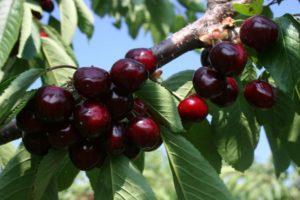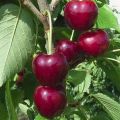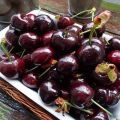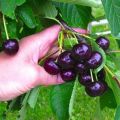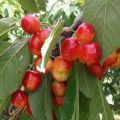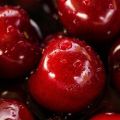Description and characteristics of Michurinskaya cherry varieties, planting and care
Cherry, known as Michurinskaya, is sweet and large. The berries ripen in early or mid-summer. Juicy, but dense fruits do not spoil for a long time, are well stored, have a beautiful appearance, and are mainly grown for sale. However, many summer residents fell in love with this variety for its endurance and undemanding care.
How the variety was bred
A new cherry variety, named Michurinskaya, was bred in 1994 by the breeder T.V. Morozova. At the Michurin Institute, experiments were carried out with the seeds of the Leningrad yellow cherry. As a result of selection, the Michurinsky variety appeared.
The new variety of sweet cherry is represented by 2 subspecies:
- late - berries ripen in the second half of July;
- early - berries ripen in late June and early July.
Varieties of Michurinskaya cherries (late and early) have the following common features:
- trees begin to bear fruit at the age of five;
- berries - round, large, dark red, heart-shaped;
- the height of the trees is 3-4 meters;
- crown - of medium density, rounded-oval, raised.
general description
Michurinsk cherry has a conical crown, directed upwards. The root system is branched. The roots are predominantly horizontal. The taproot is formed in the first years of life, over time it deepens into the lower layers of the soil by one and a half meters. The bark of young trees is smooth, brown-red, covered with stripes or lenticels. Later it begins to flake off in separate films.
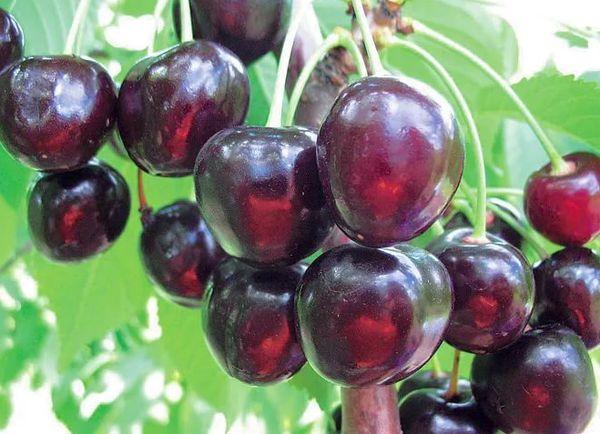
Advantages
Positive characteristics of Michurinsk cherry:
- abundant and annual fruiting;
- ripe fruits do not crumble;
- the harvest of different varieties can be harvested at the beginning and in the middle of summer;
- large in size, sweet and juicy berries;
- compact trees;
- after picking, berries retain their shape well, do not deteriorate, and can be transported over long distances;
- cherries can be grown in different regions;
- the culture is adapted to the temperate continental climate.
disadvantages
Cons of Michurinsk cherry:
- trees can freeze in frosty winters;
- for pollination requires planting near pollinating trees.
Bud
Leaves, flowers and twigs develop in spring from buds laid in the previous growing season. Leaf buds are sharp, elongated, tightly attached to the branch. Flower buds are rounded, resemble an egg, have a slightly pointed top. They protrude slightly from the branch.
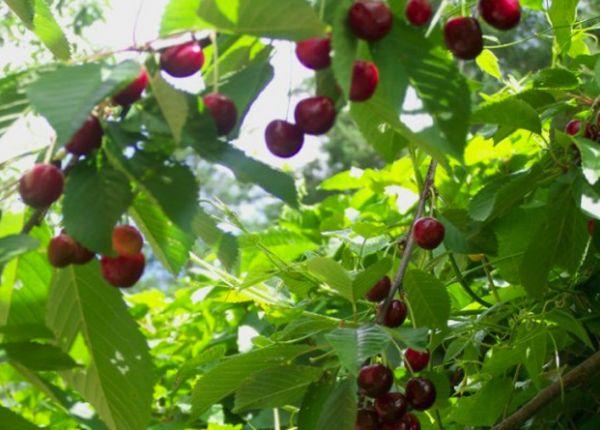
Leaf and flower
Leaves are simple, dark green, smooth, shiny, petiolate, of medium size. It is shaped like an elongated ellipse with a serrated edge. Petioles are short. At the base of the petioles there are 2 glands. Flowers are bisexual, large, white, pink-shaped, collected in umbrellas. The shape of the petals is round. The stigma of the pistil is located above the stamens. Opened earlier than leaf buds.
Fetus
The berries are round, with a shiny skin, drupes on long petioles. During the ripening process, the fruits turn dark red. The berries are broad, heart-shaped. There is a small depression at the base of the fruit. The berry has a subtle abdominal suture.
Weight
The weight of one early variety berry is 5.5-6.5 grams. The mass of a late-ripening variety reaches 6.5-7.6 grams. In drought, the berries become small. With abundant watering at the time of flowering and fruiting, the fruits grow large and juicy.
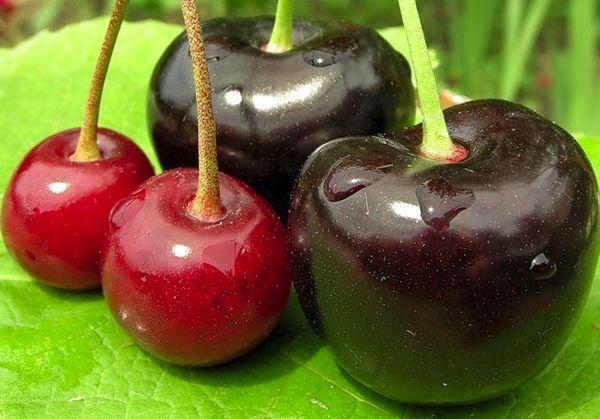
Height
All berries are approximately the same height. The length of one is 2.3-2.5 centimeters.
Width
The width of the cherry berry reaches no more than 1.8 centimeters. Larger specimens reach 21 millimeters.
Thickness
The diameter of one cherry is 20-25 millimeters. The thickness is 15 millimeters. The berries are heart-shaped, wide at the base, tapering to the tip.
Color
The color of the berries is dark red, with a small (almost imperceptible) number of subcutaneous dots. The pulp is bright red, juicy.

Peduncle
The peduncle is short in length, of medium thickness. Quickly and well detaches from the branch.
Bone
Medium size, oval, smooth. It separates perfectly from the pulp.
general characteristics
The berries are red, tender, juicy, medium density. The aroma of Michurinskaya cherry is weaker than that of cherry.
Taste qualities
Michurinsk cherry has a sweet taste with a slight sourness. Tasting score - 4.95 points out of 5.
Content of nutrients
Cherry is rich in vitamins (C, A, B1, B2, E, PP) and minerals (potassium, iron, iodine, magnesium). It differs from cherries in its high sugar content (almost 13 grams per 100 grams of fruit). Berries will perfectly satisfy hunger, are useful for hypertension, atherosclerosis. Due to the high content of iron and vitamins, it is used to treat anemia. It is a great diuretic.
Tree height and growth rate
Sweet cherries grow rapidly at a young age. The tree can live for 30-40 years, but it gives an excellent harvest only for the first 15-20 years.
Flowering and ripening period
Cherry begins to bloom late. The flowering period falls on May 10-15. The berries ripen at the end of June or in the second decade of July.
Yield
Michurinsk cherry is distinguished by high yield rates. Begins to bear fruit after 4-6 years from planting. From one adult tree, you can collect 55-60 kilograms of cherries. 80-140 centners of berries are harvested from 1 hectare.
Transportability
It retains its shape for a long time. Well transported to the desired distance. It does not deteriorate for a long time. The variety is recommended for industrial cultivation.
Drought tolerance
Michurinsk cherry perfectly tolerates drought. Young seedlings need regular watering. It is advisable to grow in warm southern regions.
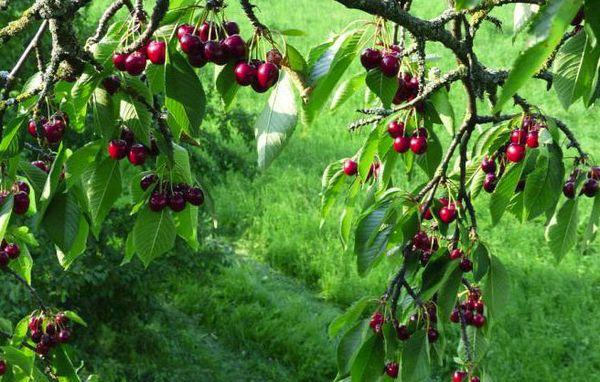
Frost resistance
This variety tolerates frosty winters well. However, during severe frosts, the tree may die. It is advisable to grow in regions with mild winters or to warm (cover) before wintering.
Disease resistance
Sweet cherry is highly resistant to coccomycosis.However, in rainy and cool weather, the disease is likely to spread. Most often, sweet cherry suffers from moniliosis and clasterosporium.
Fruit application
Berries are eaten fresh, used to prepare compotes or juices, in conservation. From the fruit, sweet jams and preserves are obtained. Berries can be frozen, used for the production of candied fruits, glazed or fortified fruits, dry jam. Sweet cherries are used in the manufacture of sweets, as a decorative element in the design of desserts.
Basic soil requirements
Sweet cherry is a thermophilic culture. Prefers areas well lit by the sun and sheltered from the wind. It grows well on fertilized, with neutral acidity, light sandy loam or loamy soils. The groundwater level is 1.5 meters. The distance to the neighboring tree is 3 meters. Does not like swampy, acidic, too clayey soil.
Landing features
Michurin cherries can be planted in your garden. You first need to purchase young seedlings. The trees are planted in early spring - before buds awaken or in late autumn - after leaf fall.
Sapling selection
It is advisable to buy young seedlings in a nursery. The trees bought at spontaneous markets do not always correspond to the declared variety. Before purchasing a tree, you need to carefully examine it. It is not recommended to buy seedlings with cracks in the bark, wounds, or mold. Annual or biennial plants with a height of 80-100 centimeters take root best in a new place.
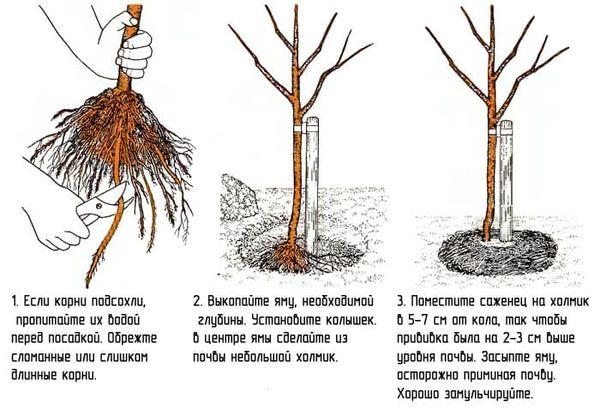
Root system
Young seedlings should have a well-developed, moist, lush, healthy root system. The rhizome should not have dry processes, growths, rot, fungi. The plant should have many roots of different lengths. Before planting, the roots are dipped in water or in a nutrient solution (Kornevin, Heteroauxin) for 12 hours.
Trunk
A young tree should have a straight trunk, several lateral shoots extending from the main one at an acute angle. The bark should be brown and smooth.
Age
The preferred age for planting is 1-2 years. During this period, the plants take root better, get sick less. However, older trees can also be planted.
Vaccination
It is advisable to buy grafted seedlings. It is done at a distance of 5-8 centimeters from the root. Trees with a graft take root better, get sick less often.
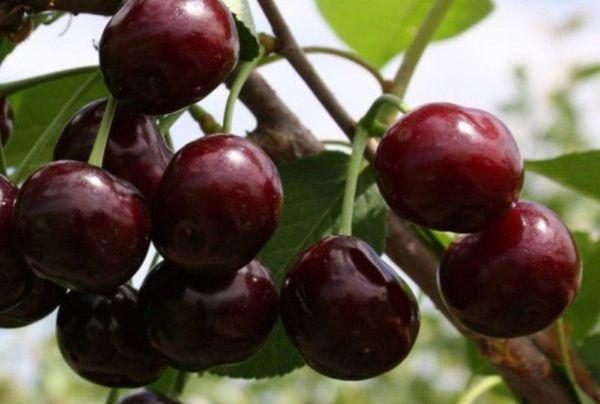
Planting timing
Young seedlings are planted in early spring or autumn. Spring planting is preferred for cold climates. Trees are planted before bud break, when the soil warms up well. Autumn planting is desirable for the southern regions.
The root system grows best in the fall. The trees are planted when the trees have shed their leaves. Saplings are planted in October, one month before the onset of frost, so that the trees have time to take root and adapt to the new habitat.
Site selection
Sweet cherry grows well on fertilized or fertile soils. Trees are planted on sandy loam or loamy soil. It is undesirable to plant plants on peat bogs, clay, sandy, acidic or waterlogged soils. Cherries do not like to grow in the shade. Prefers a well-lit area. Michurin cherries are planted near pollinating varieties. There must be at least 3 meters to the neighboring plant. Cherry does not tolerate neighborhood with pear, plum, apple.
Pit preparation
Regardless of the planting period, the seedling pit is prepared in advance. If the plant is planned to be planted in the spring, then the pit is dug up in the fall. It is necessary to allow time for the soil to settle. It is advisable to plant cherries where fruit trees have not grown before.
Sod and top fertile soil layer are carefully removed and set aside separately. Then they select the ground from the hole to a depth of 70 centimeters (width - 70 centimeters). Drainage is laid at the bottom of the excavated pit, then sod with grass down.
Fertile soil is mixed with wood ash (500 grams), leaf compost, a bucket of rotted manure (bird droppings are undesirable). A little sand is added to the clay soil. You can add 60 grams of potassium sulfate and superphosphate.
Landing
First, a little fertilized earth is poured into the pit with a slide. A seedling is placed on the mound and the roots are straightened. Then the tree is sprinkled with fertile soil to the root collar. The vaccination site should be 8 centimeters from the ground. The soil near the tree is slightly compacted and watered abundantly with water. The trunk circle is mulched with peat. Several pegs can be installed near the tree. A seedling tied to them will be more resistant to wind.
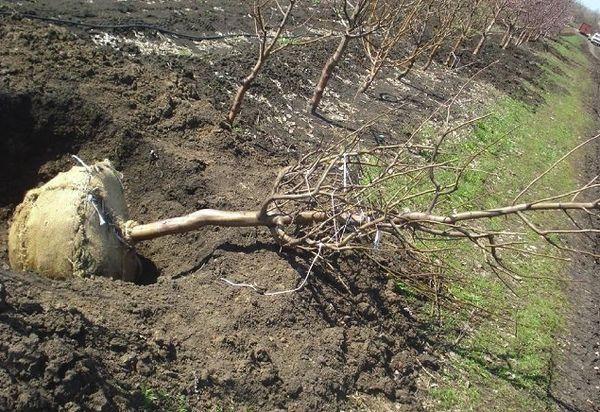
Pollinators
Sweet cherry Michurinskaya belongs to self-fertile crops. It does not bear fruit without pollen from growing near trees and bees. An orchard with a single Michurinskaya cherry will not yield crops. Plant pollinators near this tree. It is desirable that suitable trees grow at a distance of 3-5 meters from each other. You can graft cuttings from other varieties to Michurinsk cherry.
Michurinka
Cherry pollinator for Michurinskaya variety. A productive and winter-hardy culture. It blooms in the same period as Michurinskaya. Fruits are round, burgundy, weighing 5.5 grams.
Pink pearl
Sweet cherry with large, pinkish-orange fruits. Berry mass - 6 grams. For pollination, replanting of pollinators is necessary: Michurinskaya, Adelina, Ovstuzhenka.
Bigarro Burlat
A kind of large sweet cherry, originally from France. Fruits are black-red, with dark cherry juice, weighing 6.4 grams. It blooms at the same time as Michurinskaya, the fruits ripen in June.
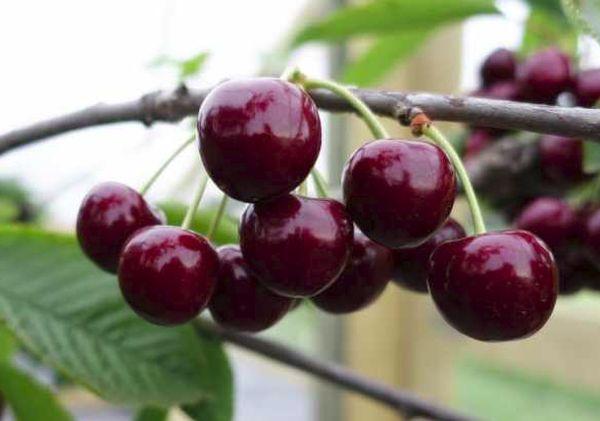
Adelina
Table variety of medium ripening. The fruits are red, weighing 5-6 grams. For pollination of this variety, Michurinskaya, Poezia or Rechitsa are planted nearby.
Poetry
The tree blooms in mid-May, the fruits ripen in July. The berries are medium in size, yellow, with a ruddy cover. The mass of one fruit is 5.5 grams.
In memory of Chernyshevsky
Dessert variety with large red juicy fruits. The weight of one berry is 4.6 grams. The pulp is tender, melting, sweet and sour.
Care secrets
Michurin cherry requires a minimum of attention. Trees are watered in dry season, fertilized, cut off branches, insulated for the winter, and protected from diseases and pests.
Watering
Abundant watering is desirable for young, newly planted seedlings. Mature trees are watered only in dry season, which falls at the time of flowering and the formation of ovaries. During the period of fruit ripening, watering is stopped, otherwise the berries will crack.
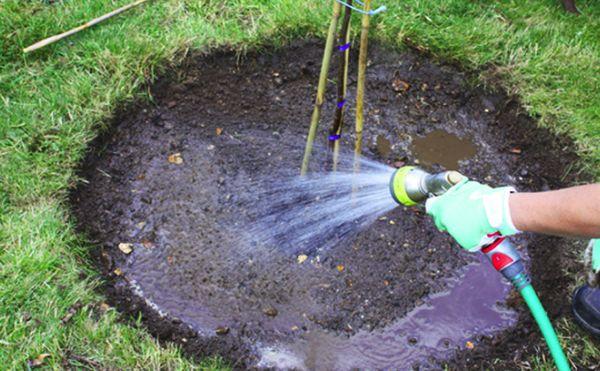
Top dressing
Sweet cherries are fed with nitrogen fertilizers in early spring. The tree is watered with mullein infusion (0.5 kilograms of fertilizer per 10 liters of water) Instead of organic matter, you can take mineral supplements (urea, ammonium nitrate). After flowering, superphosphate and potassium sulfate are introduced into the ground (35 grams per 10 liters of water).
Pruning
Cherry branches are pruned in early spring or late autumn. The formation of the crown begins in the first year of life. Forming pruning is carried out in the spring. The crown is thinned out, the length of the branches is reduced.
Sanitary pruning is done in late autumn. Remove dry, broken, diseased branches. Top shoots are removed from the tree. Every five years, they carry out anti-aging pruning, cutting off the old ones, leaving young branches.
Preparing for winter
Before wintering, the plant is treated with a lime solution. The land is mulched with peat or humus. The trunk is wrapped with agrofiber or burlap. To protect against frost in winter, a snowdrift is thrown to the tree.
Prevention of diseases and pests
To protect against fungal diseases, cherries are treated with fungicides or folk remedies. Insect pests can be treated with insecticides, homemade solutions, or traps.
Insects that cause significant harm to cherries: cherry aphid, leafworm, cherry fly, tube worm, fruit mite. Birds eat sweet berries. Glue traps are used to control cherry flies. Insecticides help from these insects (Confidor, Actellik). They are saved from the tubevert with the help of Aktara. The remedy ZOV or Confidor helps from aphids. Against these small insects, you can use tobacco dust, elderberry decoction.
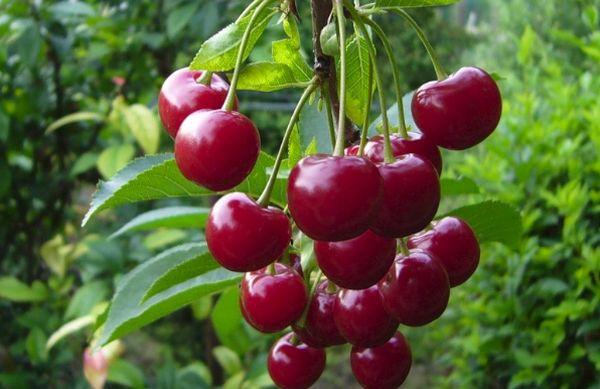
To protect against birds, rustling or shiny objects (foil, cellophane), home-made turntables, strips of white cloth are suspended on branches.
Sackcloth
A hunting belt is used to protect trees from crawling insects (caterpillars, aphids, ticks). It is made from burlap soaked in insecticide. A tree trunk is wrapped with a belt at a distance of 1 meter from the ground, tied in the center with a rope, leaving the top and bottom open in the form of a skirt. Such a trap will prevent insect pests from climbing a tree or descending.
Roofing material
You can save cherries from numerous pests wintering in the soil near the tree with the help of an ordinary roofing material. From this material you need to cut a circle with a radius of 50 centimeters. In the center - make a hole for the barrel and cut a circle. The trunk circle covered with roofing material will protect the tree from insects. You can remove it in late autumn.
Snow
In winter, you need to sprinkle snow on the tree. It will protect the plant from freezing. True, after a snowfall, the snow needs to be trampled down to prevent rodents from getting close to the tree.
Horus
This fungicide is used for many fungal diseases (moniliosis, clasterosporium). For the solution, take 3 grams of the substance and 10 liters of water. Trees are cultivated 3 times a season.
Aktara
Insecticide of intestinal action, used against insects sucking juice and gnawing leaves (aphids, beetles, bedbugs). Take 4 grams of the drug, dissolve in 5 liters of water. The mixture is sprayed with a tree and a little liquid is poured under the root.
Hom or Bordeaux liquid solution
Hom is a copper-containing fungicide. It is used for fungal infection (moniliosis, clasterosporium). Prepare a solution (40 grams per 10 liters) and spray it on the tree during the growing season.
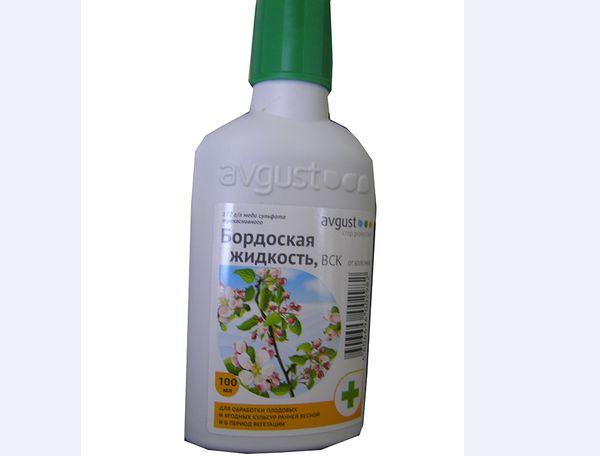
Bordeaux liquid is a fungicide that protects cherries from fungal diseases. The mixture consists of lime and copper sulfate. The drug is diluted with water. Plants are sprayed with the solution in early spring and during the growing season.
Spring processing
After the snow melts and the soil warms up, the cherry trunk is whitewashed with freshly slaked lime. Clay, copper sulfate, Dichlorvos, Dnok, Hom preparations are added to the whitewashing mixture. Before the buds awaken, the tree can be treated with a solution of copper sulfate, Bordeaux mixture, Dnok, Nitrafen.
If leaves appear on the plant, you can spray it with a solution of urea, ammonium nitrate, ammonium sulfate, or a ZOV preparation. The ground near the tree is loosened, dug up. The near-trunk circle is watered with a solution of urea, copper sulfate.
Harvesting and storage
Cherries are harvested at the stage of optimum maturity. Do not allow the final ripening of the berries. When fully ripe, the fruit becomes too soft. For better storage, cherries are plucked with a stalk. Plucked berries are carefully placed in boxes.
Store cherries in a cool room. At 4 degrees Celsius, it will not deteriorate for 2 weeks.
Reviews
Vasilyeva Olga, Voronezh:
“Michurinskaya is the most unpretentious tree. It tolerates rare watering and frosty winters. I pick several kilograms of berries every year. Enough just to eat and to preserve. I advise everyone. "

